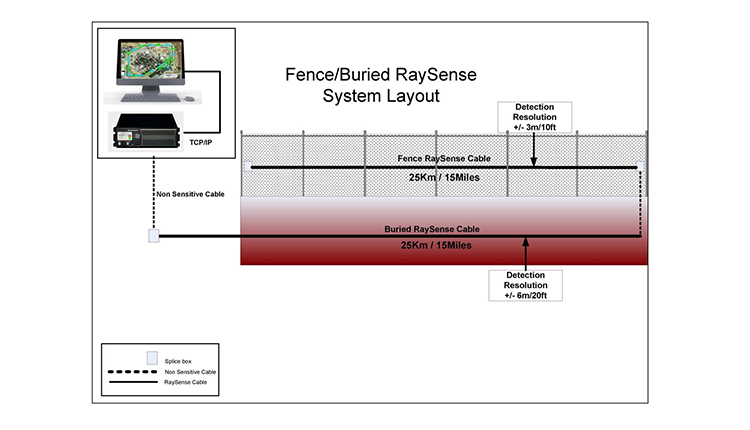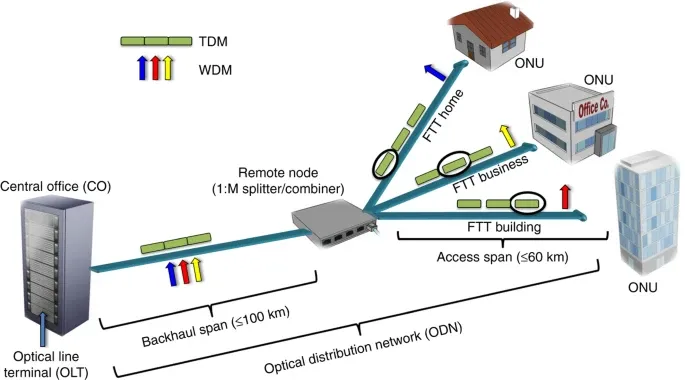Boost Your Safety With Advanced Fiber Optic Safety Equipments
In an age where safety and security is paramount, sophisticated fiber optic safety and security systems present an engaging solution for enhancing safety throughout numerous environments. What effects do these developments hold for future security actions?
Benefits of Fiber Optic Safety
Utilizing the advantages of fiber optic technology dramatically boosts safety systems throughout numerous applications. Among the primary advantages is the boosted bandwidth capability, enabling the transmission of large quantities of information at broadband. This is specifically critical for real-time video security, where high-resolution feeds can be sent without latency, making sure prompt response capabilities.
In addition, fiber optics exhibit remarkable resistance to electro-magnetic disturbance, which is important in settings with prospective signal disruptions. This reliability ensures constant performance in critical safety procedures. In addition, fiber optic cords are much less susceptible to touching and unauthorized gain access to compared to traditional copper wiring, consequently boosting information honesty and privacy.
An additional remarkable advantage is the longevity of fiber optic systems; they are more resistant to environmental variables such as dampness, temperature level changes, and destructive substances. This strength converts to decrease upkeep expenses and longer life expectancies for security installations.
Finally, the lightweight nature of fiber optic cables promotes less complicated installation and routing, particularly in complex facilities (fiber optic security system). Inevitably, the integration of fiber optic innovation right into protection systems not just reinforces defense procedures but likewise optimizes operational performance
Key Functions to Consider
When examining fiber optic safety and security systems, several key functions need to be thought about to ensure ideal efficiency and effectiveness. Initially, examine the system's discovery array and level of sensitivity; a substantial variety enables checking big areas, while high sensitivity makes certain that even minor disruptions are spotted quickly.
Next, think about the assimilation capabilities of the system. A fiber optic protection system ought to flawlessly user interface with existing safety and security measures such as cameras and alarms, producing a cohesive safety network.
Resilience and ecological resistance are also vital features. Guarantee that the system is designed to endure harsh weather condition conditions and prospective physical risks, as this will prolong its functional life expectancy.

Finally, consider the scalability of the system. A robust fiber optic safety and security system need to be conveniently expanding to accommodate future needs without significant overhauls. By meticulously considering these features, you more can pick a fiber optic safety option that boosts security and security in navigate to these guys your setting.
Installation Process Introduction
To successfully apply a fiber optic security system, an organized installation process is vital. This procedure starts with a detailed website assessment to figure out the details protection requirements and to determine ideal locations for fiber optic cords and protection tools. Following this assessment, the installation group will develop a comprehensive strategy, consisting of wire pathways, required devices, and compliance with neighborhood regulations.
Next, the setup entails laying the fiber optic cables, ensuring they are secured from ecological variables and physical damage. Proper handling methods are essential, as fiber optic cables are sensitive and can be quickly harmed. After the cabling is mounted, adapters and discontinuations are meticulously completed to guarantee signal stability.
The subsequent phase is composed of setting up protection devices such as cameras, movement detectors, and security system, all incorporated with the fiber optic network. Strenuous testing is carried out to verify that all components are operating appropriately and to make sure optimal efficiency.

Comparing Fiber Optic to Traditional Equipments
The advancement of safety innovation has resulted in significant advancements in the contrast in between fiber optic systems and conventional copper-based systems. Fiber optic systems utilize light to send information, using exceptional bandwidth and rate contrasted to their copper counterparts. This causes boosted data transmission capabilities, making optical fiber suitable for high-resolution video surveillance and real-time surveillance.
Furthermore, fiber optic cable televisions are immune to electro-magnetic interference, reducing the chance of signal deterioration brought on by outside factors. This particular guarantees constant performance, look these up also in challenging atmospheres. In contrast, typical copper systems are much more at risk to interference, bring about prospective susceptabilities in safety applications.
Resilience is an additional advantage of fiber optic systems. They are much less prone to harm from ecological aspects such as moisture and temperature level fluctuations, which can jeopardize copper wiring. Fiber optics are lighter and thinner, permitting for simpler installment and decreased physical impact.
Nevertheless, typical systems often tend to have lower preliminary prices, making them attractive for budget-conscious jobs. While fiber optic systems might call for a greater upfront investment, their long-lasting advantages-- such as lower maintenance costs and higher integrity-- frequently exceed the first expenditure, placing them as a superior option for modern-day security needs.
Future Patterns in Safety Modern Technology
Arising trends in safety and security innovation are positioned to change the landscape of security and threat detection - fiber optic security system. As organizations progressively deal with innovative hazards, innovations such as synthetic intelligence (AI) and artificial intelligence (ML) are ending up being integral to safety and security systems. These technologies boost the ability of fiber optic systems by enabling real-time data analysis, determining anomalies, and automating reactions to prospective breaches
In addition, the assimilation of the Web of Things (IoT) is transforming safety and security frameworks. IoT tools can supply extensive situational awareness and facilitate smooth communication between various safety elements. This interconnectedness allows for more reliable tracking and faster incident feedback times.
Biometric verification is likewise gaining energy, offering a higher degree of safety and security through special physical qualities. As this technology advances, it is most likely to be incorporated right into fiber optic systems for improved access control.
Final Thought
In final thought, progressed fiber optic security systems represent a considerable innovation in safety and security and surveillance innovation. The change from traditional systems to fiber optic services shows an expanding fad towards much more effective and reliable protection measures in an increasingly complicated technological landscape.